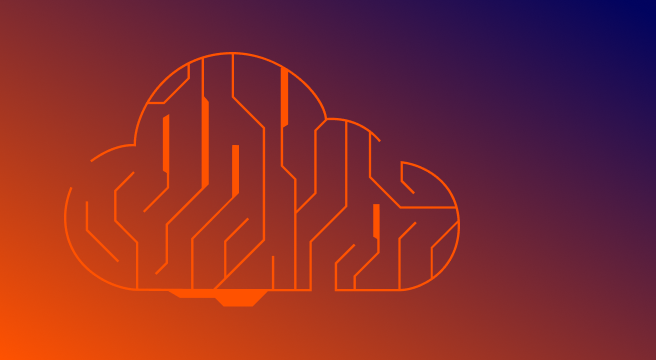Cloud security in AWS, Azure and GCP
Last updated | July 1, 2025 |
Reduce risk across configurations, IAM and workloads
To secure your cloud, you must know how each cloud service provider approaches shared responsibility. AWS, Azure and GCP all offer native tools and controls, but they do things differently under the hood. Identity permissions, logging settings and role structures might look familiar, but the details vary in ways that matter.
AWS, Azure and GCP security
Unifying visibility across cloud environments and catching identity and access management (IAM) misconfigurations early makes it easier to manage cloud risk and stay compliant without jumping between disconnected tools.
This page breaks down the security models of all three major CSPs and highlights where your teams may need additional context, visibility or tooling to secure each model.
Whether you’re working in one cloud or managing multi-cloud environments, knowing where native controls end and the cloud shared responsibility model begins is essential to preventing misconfigurations and identity exposures.
AWS security
Amazon Web Services (AWS) operates under a shared responsibility model. AWS secures the infrastructure and you’re responsible for your configurations, access controls and data protection.
AWS offers native tools for threat detection, IAM for access management and centralized visibility. Still, cloud misconfigurations like public S3 buckets and wildcard IAM roles remain common risks.
A cloud security platform like Tenable enhances AWS security by integrating with native APIs to uncover identity exposures and asset misconfigurations. It correlates idle access keys with public endpoints to surface exposure-inducing assets (EIAs) and flags high-risk pathways between compute and data services.
Azure security
Microsoft Azure’s shared responsibility model places configuration and identity security in your hands.
However, overly broad role-based access control (RBAC) roles, exposed endpoints and unmonitored resources continue to introduce risk.
Azure’s tools often lack multi-subscription correlation and context between identities and workloads.
Tenable fills those gaps by analyzing CIEM data to detect identity misconfigurations across Entra ID.
For example, a misconfigured service principal with unnecessary permissions to sensitive storage flagged as part of a toxic combination can help you prioritize real threats.
The platform integrates with Azure Policy to enforce configuration baselines and streamline remediation through policy-as-code.
Google Cloud (GCP) security
Google Cloud’s shared responsibility model entrusts you with identity, resource and data controls. Security Command Center, VPC Service Controls and IAM are your first lines of defense.
Still, default service accounts, overly permissive IAM bindings and disabled logging are frequent culprits in cloud security incidents.
GCP’s resource hierarchy (projects, folders, orgs) adds complexity to cloud workload protection.
Tenable integrates with GCP APIs to connect identity risk with workload exposure.
For instance, it flags idle service accounts with elevated privileges tied to public functions. It enables identity-to-data correlation, which is critical in preventing privilege escalation and lateral movement.
The platform also supports enforcement through Google Cloud Policy Intelligence and aligns findings with frameworks like CIS Benchmarks.
Why cloud security differs by provider
While AWS, Azure and GCP all support IAM, logging, encryption and monitoring, the implementation details differ significantly:
- AWS uses policies and trust relationships.
- Azure relies on RBAC roles and Entra ID
- GCP uses service accounts and project-scoped roles.
- Logging, encryption and firewall settings vary widely.
- One provider may default to permissive access unless manually restricted.
- Native tools offer different levels of context.
- Azure Defender has deeper integration with Microsoft 365.
- GCP emphasizes project isolation.
Because of this, a multi-cloud visibility strategy is essential. Relying solely on native tools leaves blind spots and disconnects between identity, workload and data risk.
Siloed cloud security tools
Cloud providers offer built-in tools, but they’re often siloed by service or account.
A cloud native application protection platform (CNAPP), like Tenable, combines those native insights with identity, workload and data context, so you see the whole picture, not just parts of it.
| Capability | AWS Native Tools | Azure Native Tools | GCP Native Tools | CNAPP Platforms |
Configuration scanning
| AWS Config, Security Hub
| Defender for Cloud
| Security Command Center | Unified posture across clouds and accounts
|
Identity entitlement analysis
| IAM Access Analyzer
| Microsoft Entra Permissions Management | Policy Analyzer
| Cross-cloud CIEM with usage-based least privilege |
Vulnerability scanning
| Amazon Inspector
| Defender for Servers
| Container Scanning API
| Context-aware VM/container scanning with exposure scoring
|
Runtime protection
| GuardDuty, AWS WAF | Defender for Containers
| Cloud IDS
| Integrated CWPP and behavioral detection |
Shift-left integration
| CodeGuru, cfn-lint
| Bicep linter, Defender for DevOps
| Cloud Build scanning
| IaC scanning + fix suggestions across pipelines
|
Exposure path mapping
| Partial (via GuardDuty)
| Limited to Defender alerts
| None native
| Exposure Graph with toxic combination detection
|
Data sensitivity tracking
| Macie
| Microsoft Purview
| DLP API (limited)
| DSPM with identity-linked risk scoring |
While native tools offer point solutions, CNAPPs bring everything together, so your team can prioritize risky items rather than misconfigured ones.
Key takeaways for multi-cloud teams
- Layer in a CNAPP solution like Tenable Cloud Security to unify identity, misconfiguration and data risk across providers.
- Prioritize misconfigurations that expose sensitive assets, not just violations of best practices.
- Apply policy-as-code and shift-left approaches to catch issues early in your pipeline.
For more cloud-specific threat detection, remediation and policy integration, visit the Tenable cloud security hub.
CSP security resources
CSP security products
Cybersecurity news you can use
- Tenable Cloud Security
